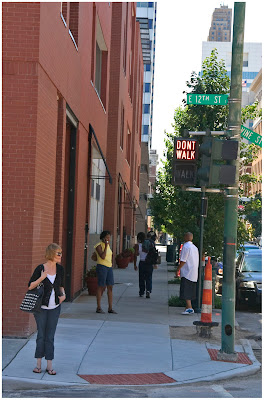The City of Cincinnati, in combination with the Uptown Consortium, has announced that 14 new high-tech surveillance cameras will be installed in various locations throughout Downtown (8) and Uptown (6). The cameras are being touted by local officials and community leaders as being a 21st Century crime fighting tool that should make Cincinnati a safer place.
The $19,000/piece cameras are not going to stop at this initial installation, that is expected to be fully operational within the coming months, as officials will have another dozen installed throughout East Price Hill and Westwood along Glenway Avenue by summer. An additional 12 to 15 cameras will be installed to monitor bridges, piers and waterways. Two years from now, officials hope to have 50 to 60 cameras installed across the city in other neighborhoods like Over-the-Rhine, Avondale, College Hill and Northside in addition to those in Downtown, Westwood, East Price Hill, Clifton Heights, University Heights, Fairview, Corryville and Clifton.
Public safety officials often proclaim that these types of cameras have the ability to deter crime and make neighborhoods safer, when in fact they don’t. Cameras simply move criminal activity around much like citronella candles keep bugs away from your backyard barbecue.
The cameras were paid for by a $2 million federal grant, but what about the ongoing maintenance? Who is going to watch the live video stream, or will someone? Who is going to review the tapes? What will be reviewed? What about archiving…how long, how much, where, and who manages it? What is the City going to actually do with all this information?
It would seem to be logical to assume that the primary use, for the cameras, will be for building cases against those who have already committed crimes. So, once again, how is this making the city safer? Instead it would seem that the cameras would just make prosecution more effective in some cases. But at the same time, I would imagine the criminals will be smart enough to see the bright white and prominently branded cameras and move their operations just outside the cone of view.
So then what, do we install more cameras…cameras on every street corner? Who will pay for that kind of an operation, and are Cincinnatians accepting of this Big Brother kind of a move? In New York they are in the process of installing some 3,000 cameras that will be fully operational by 2010. The costs of New York’s system is pegged at $90 million with a $25 million surveillance center in the project’s first phase in lower Manhattan.
The London Evening Standard just reported that even with London’s impressive array of more than 10,000 CCTV cameras, the most expansive system of its kind anywhere, that roughly 80 percent of crimes go unsolved. The $334+ million system not only is not solving the core issues surrounding the need for individuals to result to criminal behavior, but the system is not even showing effectiveness in the one area it is suppose to shine.
This approach to crime fighting seems to be a reactionary way to manage complex criminal behavior. More money should be spent on identifying the causes behind individuals resulting to criminal behavior, and how to address that. Instead what we’re doing is spending $2 million on a project that at best will put more non-violent criminals behind bars or at least through our legal system, and at worst, become cumbersome to manage and prove ineffective much like London’s advanced Big Brother system.





